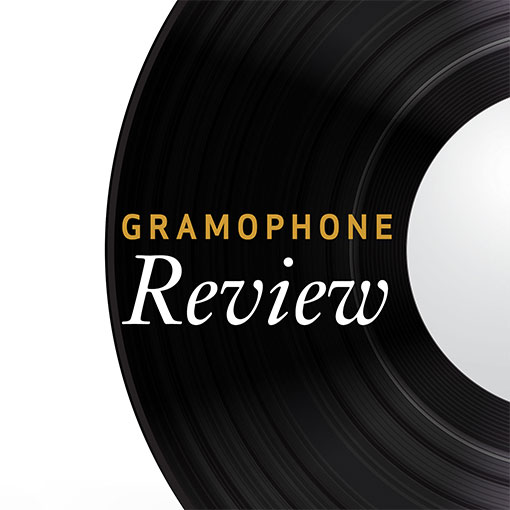Granados Goyescas
View record and artist detailsRecord and Artist Details
Composer or Director: Enrique Granados (y Campiña)
Label: Chandos
Magazine Review Date: 3/1996
Media Format: CD or Download
Media Runtime: 61
Mastering:
DDD
Catalogue Number: CHAN9412

Tracks:
| Composition | Artist Credit |
|---|---|
| Goyescas |
Enrique Granados (y Campiña), Composer
Enrique Granados (y Campiña), Composer Eric Parkin, Piano |
| (El) Pelele |
Enrique Granados (y Campiña), Composer
Enrique Granados (y Campiña), Composer Eric Parkin, Piano |
Author: Lionel Salter
A performance indication at the beginning of Granados’s Goyescas, one of the two main pillars of Spanish piano music (the other being Albeniz’s Iberia), is con garbo y donaire (“with charm and elegance”). The description aptly fits the present performances. Non-Spaniards playing this repertoire commonly fall into one of two categories, either pulling the music about in an attempt to inject a pseudo-Iberian ‘expressiveness’, or treating it with a strict literalness that they perhaps (giving them the benefit of the doubt) think of as representing the austere side of the Spanish character. Eric Parkin is an artist intelligent and musicianly enough to avoid both these extremes.
His readings certainly have an element of free rubato about them, but this is not allowed to become excessive, and it serves to underline the essentially improvisatory nature of these pieces. Aided by a clean technique in this sometimes complex texture – he is very adept, too, at integrating the numerous small skirls that help to give character to the melodic lines – he gives persuasive performances that also contain much poetry: I would instance the end of the “Balada” and his “Coloquio en la reja”. (For this, incidentally, the note, translating it as “Conversation through the bars”, postulates an image of “a prisoner declaring his love from inside his cell”; but surely this is only – as in the Goyescas opera – a declaration through a beloved’s window-grille?) Parkin strikingly captures the dignified flamboyance of the traditional dance in the “Fandango by candlelight”, carefully observing the direction “avec beaucoup de rhythme”. Two of the hardest tests for a pianist in this collection of Goyesque studies are the preservation of coherence in the long “Serenata del espectro” and the avoidance of mawkishness in “La maja y el ruisenor”: Parkin emerges successfully from both.
A piano with particularly bright top octaves was perhaps not the ideal instrument for this recording, but there is no lack of colour and nuance from the performer. Even measured against the formidable competition of Larrocha (in her earlier Decca recording), this is a highly recommendable disc. I would only suggest that this El pelele is too refined for the image of a straw dummy being tossed in a blanket by overexcited majas.'
His readings certainly have an element of free rubato about them, but this is not allowed to become excessive, and it serves to underline the essentially improvisatory nature of these pieces. Aided by a clean technique in this sometimes complex texture – he is very adept, too, at integrating the numerous small skirls that help to give character to the melodic lines – he gives persuasive performances that also contain much poetry: I would instance the end of the “Balada” and his “Coloquio en la reja”. (For this, incidentally, the note, translating it as “Conversation through the bars”, postulates an image of “a prisoner declaring his love from inside his cell”; but surely this is only – as in the Goyescas opera – a declaration through a beloved’s window-grille?) Parkin strikingly captures the dignified flamboyance of the traditional dance in the “Fandango by candlelight”, carefully observing the direction “avec beaucoup de rhythme”. Two of the hardest tests for a pianist in this collection of Goyesque studies are the preservation of coherence in the long “Serenata del espectro” and the avoidance of mawkishness in “La maja y el ruisenor”: Parkin emerges successfully from both.
A piano with particularly bright top octaves was perhaps not the ideal instrument for this recording, but there is no lack of colour and nuance from the performer. Even measured against the formidable competition of Larrocha (in her earlier Decca recording), this is a highly recommendable disc. I would only suggest that this El pelele is too refined for the image of a straw dummy being tossed in a blanket by overexcited majas.'
Discover the world's largest classical music catalogue with Presto Music.

Gramophone Digital Club
- Digital Edition
- Digital Archive
- Reviews Database
- Full website access
From £8.75 / month
Subscribe
Gramophone Full Club
- Print Edition
- Digital Edition
- Digital Archive
- Reviews Database
- Full website access
From £11.00 / month
Subscribe
If you are a library, university or other organisation that would be interested in an institutional subscription to Gramophone please click here for further information.





